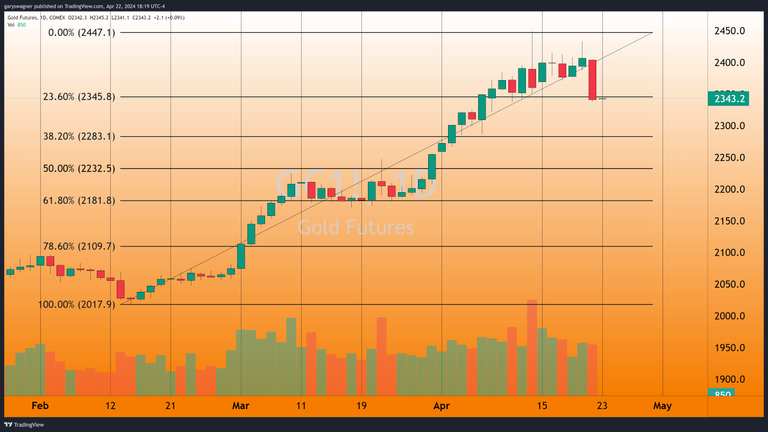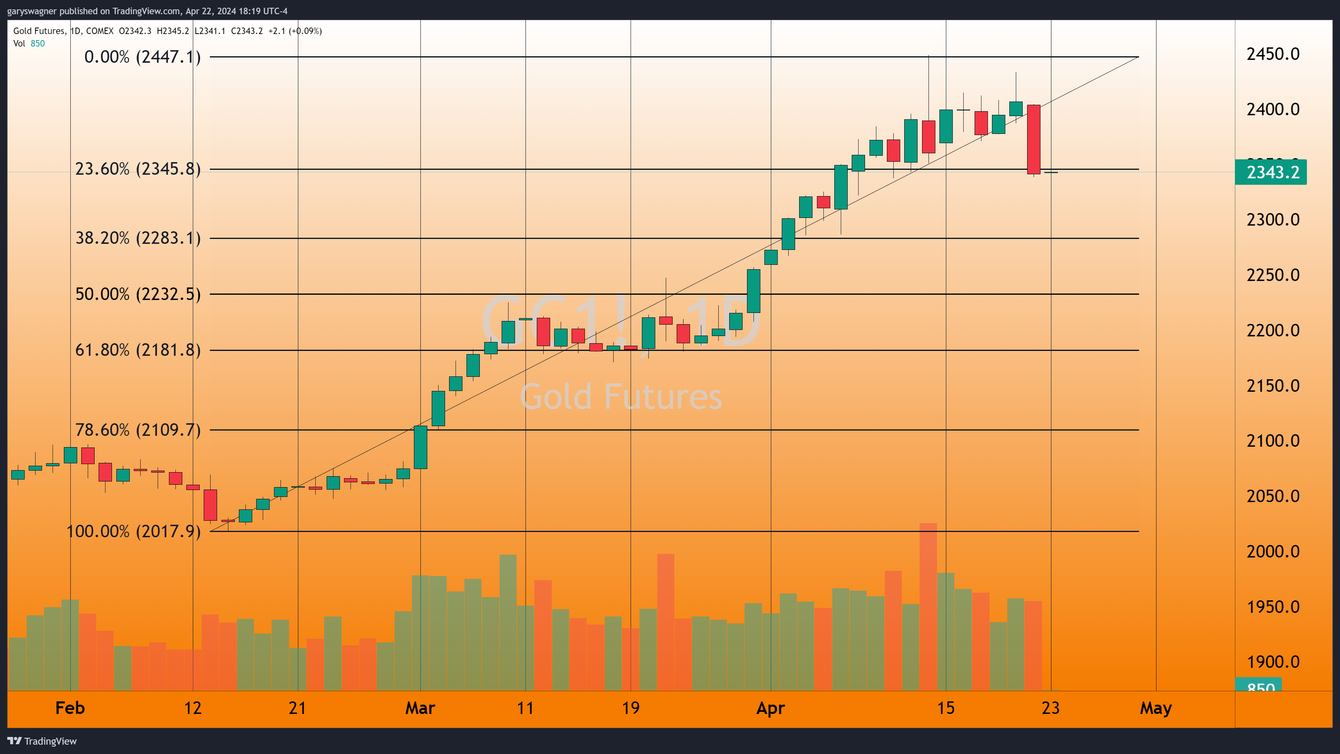Gold investors and traders witnessed the largest single-day drop in gold futures in over three years on Monday. Gold futures plummeted by $65.60, or 2.73%, marking the steepest decline since February 2021.
The catalyst behind this sharp sell-off was Israel's restrained response to the recent missile and drone attack launched by Iran. Despite the massive barrage of over 300 missiles and drones targeting Israel last Saturday, the Israeli retaliation was relatively muted, avoiding a significant escalation of tensions in the Middle East.
While Israel vowed to retaliate, its actions, which involved launching drones and F-35 fighter jets into Iranian territory, were limited in scope and caused minimal damage. This measured response, potentially influenced by pressure from the United States and other parties, effectively defused concerns of a broader regional conflict.
From a technical standpoint, Monday's sell-off could be an isolated event, triggered by the specific fundamental factor of Israel's restrained retaliation, which alleviated fears of an escalating Middle East conflict.
Market participants may now shift their focus to upcoming inflation data for March, specifically the Personal Consumption Expenditures (PCE) report scheduled for release on Friday, April 26, at 8:30 AM ET.
According to the Cleveland Federal Reserve's "nowcast" estimate, the report is expected to reveal a 0.3% increase in both headline and core inflation for March. This would be lower than the 0.4% monthly rise in the Consumer Price Index (CPI) reported on April 10, indicating a potential acceleration in inflation.
Forbes predicts that the PCE inflation data could confirm a lack of disinflationary progress so far in 2024, potentially reaching an annual rate of 2.6% year-over-year in March, up from 2.4% in January. This trend has caused the U.S. Federal Reserve to downplay expectations for interest rate cuts in the coming months.

If inflation continues to accelerate, it could significantly impact the timing of the Federal Reserve's pivot from its current monetary policy stance, which has maintained the benchmark interest rate between 5.25% and 5.5%. While initial rate cuts were anticipated in June, recent statements from the Fed suggest that persistent elevated inflation levels may necessitate keeping interest rates at their current levels for an extended period, potentially creating bearish headwinds for gold prices.
For those who wish to learn more about our service, please go to the links below:
Pricing, Track Record, Trading system, Endorsements of Confidence, FAQ
Wishing you as always good trading,

